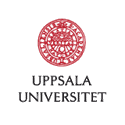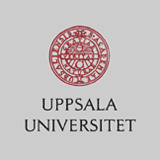Kursinformation finns inte tillgänglig på svenska, visar engelsk kursinformation.
Science Communication & Outreach, 2 hp, 2 hp
| Kursnummer | - |
| År | 2021 |
| Typ | Subjectcourse |
| Spår | - |
| Max antal deltagare | 20 |
| Sista ansökningsdag | 2021-08-27 |
| Språk | En |
| Kursansvarig | Eva Garmendia |
| Institution | IMBIM |
| Besöksadress | |
| Postadress | |
| Datum | 6-7-8 September 2021 |
| Lokal | Triple Room, Navet, BMC |
| Kurslängd | 3 days |
| Kursrapport | |
| Kursplan |
Beskrivning
The ultimate goal of scientific advances is to have an impact in society. In this respect, communication of new scientific methods and results, and the popular outreach of science are of extreme importance to fill the gap between research and broad social environments. There are different sectors of society and consequently many ways that science can be brought to the public in effective ways: i.e. from spreading the news of scientific discoveries to stimulating kids into this fascinating world. In this course, we gather together experts in different areas of science communication and outreach to share their knowledge and experience with a broad audience, with the aim that attendees will be inspired to find their ways to contribute to scientific dissemination.
Inlärningsmål
The course goals and content are of outmost interest for any student being trained to be a scientist in any of the disciplinary domain. The skills developed and tools presented at this course can be used by professionals within any scientific disciplines, both in the private or public sectors. Moreover, communicating science and outreach activities is one of the mandates of an academic at Swedish Universities (and this is somehow universal), and this course provides with the necessary training to fulfill this requirement. It covers communication through traditional press media as well as modern media (social networks); using modern techniques (podcasts, videos) or additional tools such as art-related to prepare communication documents; how to outreach to the young population in specific, and the society in general; presenting scientific results to a broad audience.
The specific learning outcomes that a PhD student should achieve after this course are:
1. You should be able to communicate a scientific discovery to the press media and communicate with journalists.
2. You should be familiar and know hoe/when to use different communication tools such as podcasts, videos or artistic media to communicate science
3. You should be familiar with the techniques to outreach the young students, i.e. visits to schools, visits from schools, scientific fests
4. You should be minimally proficient in using social media (i.e. twitter, wilipedia) to disseminate science.
5. To Improve your skills present your scientific results using standard poster or presentation.
Innehåll
Tthe following topics are be covered by designated experts in the field, with a format of theoretical lectures + practical workshop sessions (when indicated):
1. Press coverage of scientific research(+practical: lecturer from Uppsala University press office; Guest lecturer from SINC, Spain;
2. Visualization of science in effective ways. + practical: Andreas Dahlin– Visualize your science)
3. Use of social media for scientific outreach (+practical: Germán Orizaola/Olle Terenius – Uppsala University.)
4. Communication between the scientist and the politician (Maria Pränting - Uppsala University and ReAct)
5. The pedagogics of science (Brady Caldell, Kvarngärdetskola)
6. Science and Society (Gustav Bohlin - Vetenskap & Allmänhet)
7. Science podcast creation (Eva Garmendia - The AMR Studio Podcast - UAC, UU).
8. The role of the communications officer (Susana De Lucas - Center for Biotechnology Spanish Research Council).
9. Elevator pitch techniques (+practical. Rhiannon Sanders - Sanders Communications)
10. Life as a freelance communicator (Ben Libberton)
Examination
Obligatory attendance, obligatory hand-in of the practical exercises when indicated.


